When we think of children adversely affected by World War II, it is usually in the context of deportations and other Nazi atrocities, intentional and unintentional bombings of civilians (on both sides), and separations from parents and homes. However, certain stories have been consigned to history and largely forgotten except in the memories of new but distant generations of relatives of the participants. Today’s blog is the story of an evacuation ship, a German U-boat, and ninety innocent children.
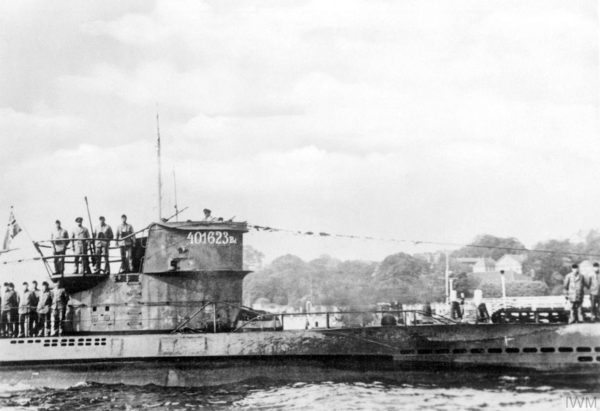
Did You Know?
Did you know that in her Harry Potter book series, J.K. Rowling based some of the stories and characters on actual historical events? Her first book, Harry Potter and the Philosopher’s Stone, used a medieval alchemist, Nicolas Flamel, as the basis for the book. Nicolas Flamel (1330−1418) was a wealthy bookseller, manuscript copyist, and notary in Paris. He married Perenelle in 1368 and she brought quite a fortune to the marriage. (Nicolas was her third marriage.) The couple were devoted Catholics and contributed heavily to churches and almshouses. The two of them became well-known and respected alchemists. The “art” of alchemy was responsible for the development of modern-day astrology, astronomy, cosmology, biology, medicine, chemistry, and physics. (I failed most of those courses on my way to obtaining a B.S. in geology.)

Flamel purchased a 21-page book written by Abraham the Jew⏤“a noted prince, scholar, priest, astrologer, and philosopher.” The book was in Hebrew and Flamel needed a translator. Unfortunately, the Jews had been kicked out of France so Nicolas and Perenelle traveled to Spain and found someone who partially translated the book’s content. By 1382, they had decoded enough of the book’s content and symbols to realize it contained the key to “The Philosopher’s Stone,” a substance that could take base metals such as mercury and lead and turn them into silver and gold. Pernelle died in 1397 and Nicolas continued his philanthropic activities while everyone in Paris wondered whether he had succeeded in turning nothing into something.
The oldest remaining house in Paris is the four-story building located at 51, rue Montmorency (3e) that was constructed by Flamel in 1407. Legend has it that Flamel carried out his experiments in this building. After his death, he bequeathed the property to the church, Saint-Jacques la boucherie, where he and his wife were buried under the altar. The church was destroyed during the French Revolution and only the tower remains. Nicolas designed his tombstone, and it can be viewed at the Musée de Cluny. After he died, the house was ransacked many times by people looking for “The Philosopher’s Stone.” It was never found nor was the copper-covered book of Abraham the Jew.
In my book, Where Did They Burn the Last Grand Master of the Knights Templar? Volume One, you can visit the former Flamel residence on Walk Three, Stop One. If you get there in the evening, stay for dinner. A restaurant is located inside the building.
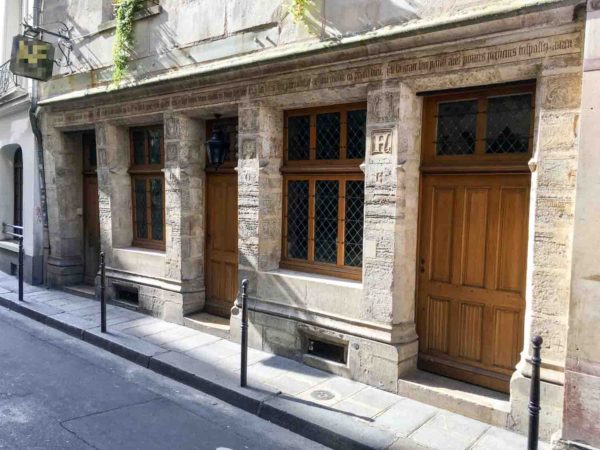
Children’s Overseas Reception Board
Great Britain had been at war with Germany since early September 1939. There was little military engagement between the two belligerents until May 1940 (“The False War”). British troops were trapped between the North Sea and the advancing German army resulting in the evacuation of Dunkirk. The Germans quickly invaded the Low Countries and France and by mid-June, Germany occupied most of Europe. Hitler quickly turned his attention to the invasion of Great Britain (Operation Sea Lion; click here to read Professor Dr. Six). After the failure of his Luftwaffe in the Battle of Britain (beginning 10 July 1940), Hitler gave up on the invasion plans in September and decided a more effective method of subduing the English would be to heavily bomb populated cities such as London. The Blitz began on 7 September 1940 and did not end until May 1941. The intent was to pressure the British government to come to terms with Germany. The indiscriminate bombing with its damage to property and people as well as the belief that Hitler was likely getting ready to invade the island led to the formation of the Children’s Overseas Reception Board (CORB).
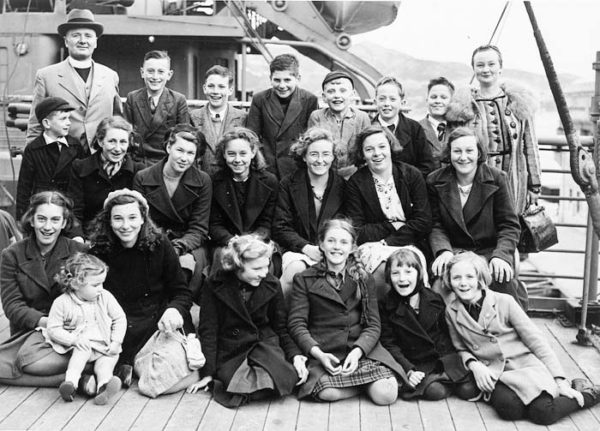
Against Winston Churchill’s wishes, the War Cabinet established CORB with Sir Geoffrey Shakespeare (1893−1980) responsible for the implementation and execution of an evacuation program aimed at getting British children out of harm’s way and sending them to Canada and other selected countries. Applications were filled out by parents and submitted to CORB. Selected children were to be accompanied by an adult escort, usually a volunteer teacher, as well as doctors, nurses, and clergy. The embarkation point was Liverpool with destinations being Canada (Montreal), Australia, New Zealand, and South Africa. The ships were always part of a convoy but as we’ll see, this protection was not always enough.
More than 211,000 applications were filed during the first several months of the program. Of these, 24,000 children were approved for evacuation and before the program was ended in September 1940, 2,664 children had been evacuated from England.
SS City of Benares
The SS City of Benares was a steam passenger ship completed in 1936 in Glasgow, Scotland. It could carry up to two hundred passengers with 125 crew members. The Benares was used as one of the evacuation ships to transport children from England to Canada where they would be safe from German bombs during The Blitz.

During the early years of the war, the Germans believed that if they could cut off essential supplies bound for England, the British would be forced into surrendering or at a minimum, sign a peace accord. Since most of the goods came in by ship, the German navy sent its U-boats out in “wolf packs” to hunt down and sink merchant ships. British military leaders decided the safest strategy for these ships to travel would be in convoys. The Benares was part of convoy OB-213 and its position within the convoy was the first ship in the center column (considered to be one of the safest spots in a ship convoy). The ship was commanded by Ship’s Master, Capt. Landles Nicoll (1889−1940) and it served as the flag ship of convoy commodore, Rear Admiral E.J.G. Mackinnon.
The Attack
The Benares left Liverpool on 17 September 1940. On board were 266 people including ninety children ranging in ages from five to fifteen. As the ship continued its voyage, the weather became increasingly hostile.
The ship had traveled several hundred miles in the Atlantic Ocean when a torpedo hit its stern just past midnight on 18 September. The German submarine, U-48, fired three torpedoes; the first two missed but the third, struck the ship just below the childrens’ sleeping quarters, resulting in the Benares sinking within thirty-minutes. Fifteen minutes after she was struck, the captain called for the ship to be abandoned. The lifeboats were lowered with great difficulty due to weather conditions.
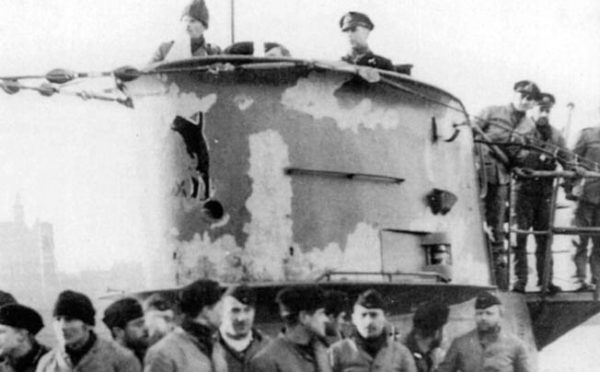
Lifeboat no. 8 was the first to be lowered with its passengers. Waves immediately hit the boat, and everyone was thrown overboard. No one survived. Passengers in lifeboat no. 5 faced a similar fate. The victims of the tragic sinking either drowned or died of extreme exposure. Survivors said that if you went to sleep, you died.
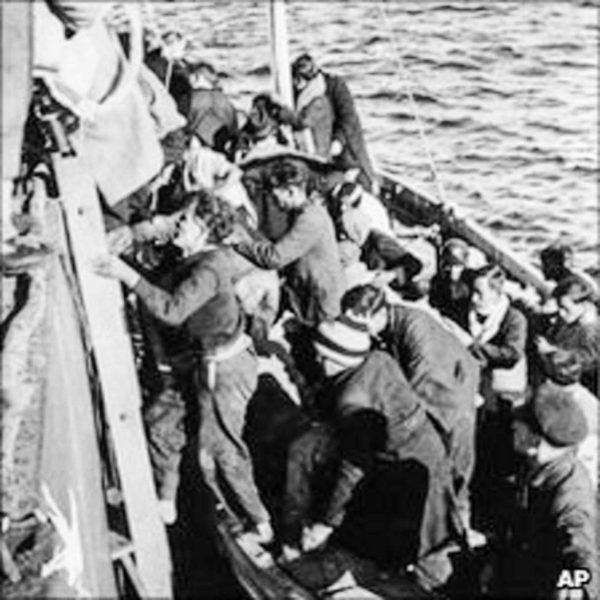
One of the surviving children was eleven-year-old Colin Ryder Richardson (1929−2013). Colin did not have a formal escort like most of the children. His mother asked her friend, Laszlo Raskai, to “keep an eye on Colin.” She sewed a small scarlet lifejacket into the lining of Colin’s coat and told him to never take the coat off until he reached Canada. Colin was assigned to lifeboat no. 2 and by the time it had disengaged from the Benares, the lifeboat was half submerged in icy water with its mast and rudder broken off. Despite the darkness, Colin watched the ship sink. Freezing weather, high winds, enormous waves, hail, and rain made it difficult to survive. Four crew members on Colin’s boat quickly died of exposure. At one point, Colin thought they were going to be rescued when he saw the lights of another ship. Unfortunately, the lights were from the U-48 which had surfaced to assess the damage. Of the original thirty-eight people who boarded the lifeboat, only fourteen (including Colin) were alive when rescued. Today, you can view Colin’s coat and little scarlet lifejacket at the Imperial War Museum.
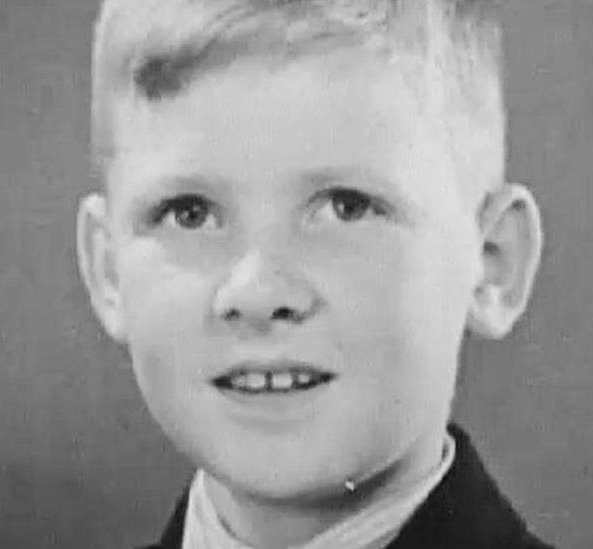
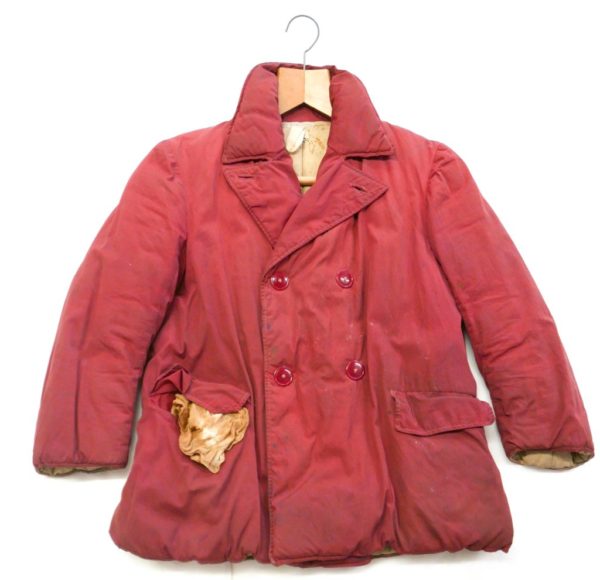
The following evening (19 September), the HMS Hurricane arrived on the scene and picked up 105 survivors. The first lifeboat hauled in only contained bodies. Only one child (out of fourteen) on lifeboat no. 10 was alive. Two out of eleven children survived on lifeboat no. 11. The survivors were delivered to Greenock, Scotland. One of the lifeboats went adrift for eight days with forty-two survivors before being rescued by the HMS Anthony.
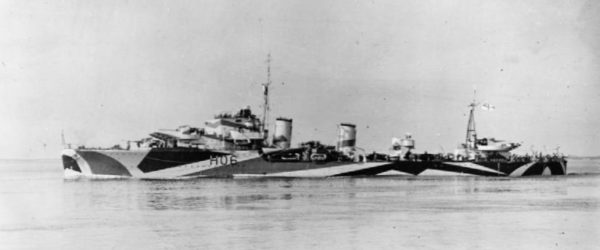
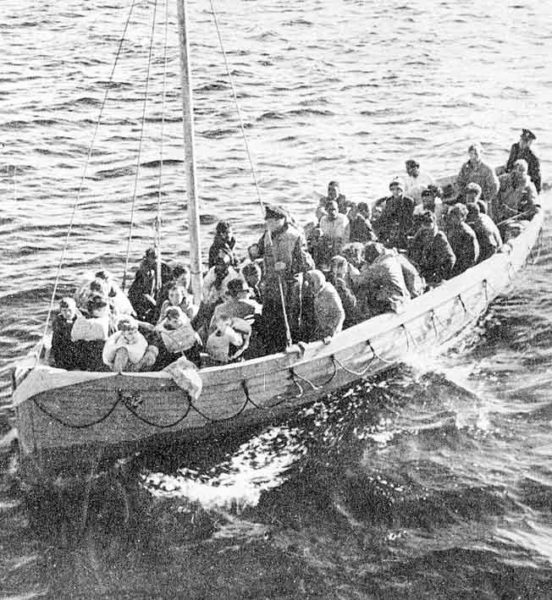
Ninety CORB children boarded the Benares and only thirteen survived. One family lost five children. The captain went down with his ship as did 121 crew members. (The convoy commander did not survive.) A total of 134 passengers were lost (including seventy-seven children). At the time of the attack and sinking of the Benares, it was the worst maritime disaster of the war.
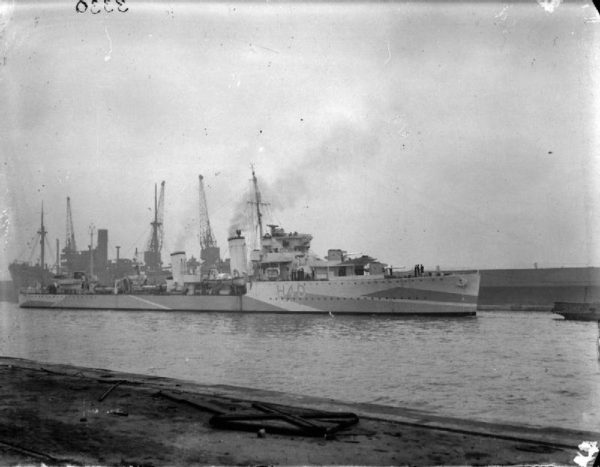
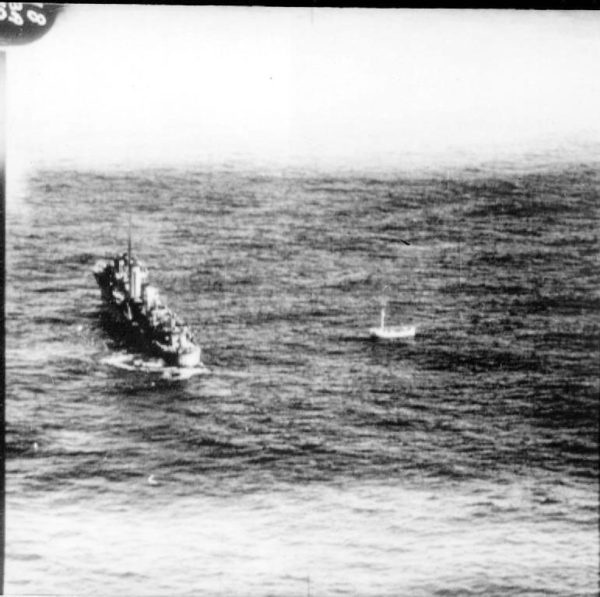
As lifeboat no. 2 was brought alongside the HMS Hurricane, Colin and the other survivors could be heard singing “Rule Britannia.”
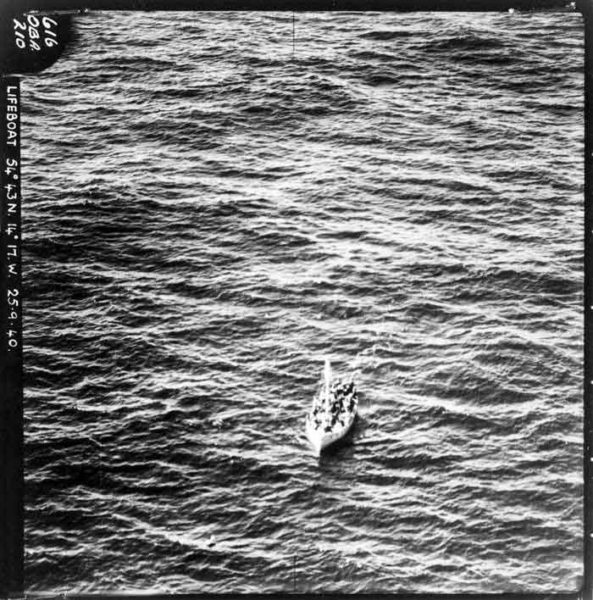
Benares was not the only evacuation ship targeted by the German U-boats. Holland America’s SS Volendam was attacked by U-60 on 30 August 1940. Two torpedoes hit the ship but only one exploded. The Volendam did not sink and was towed back to Greenock, Scotland. The ship carried 320 children and there were no casualties. (They found the unexploded torpedo embedded in the bow of the ship and had it exploded, it is likely the Volendam would have sunk.)
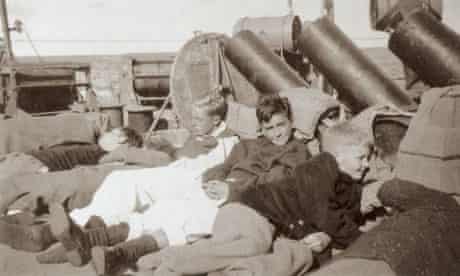
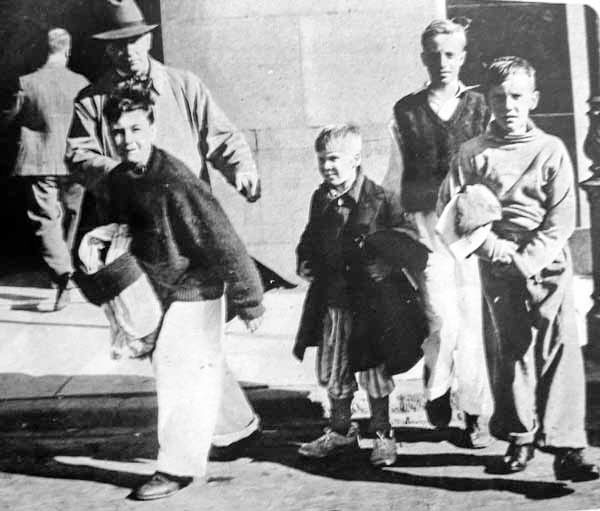
“I’m here because of what Bobby did for me. Bobby gave a great gift to me and I shall forever be grateful . . . he gave me his lifejacket and he has given me sixty-five years of life which he didn’t have.”
⏤John Baker, child survivor
Bobby was his brother

“It was terrible, you had to fight every minute. My hands were being cut in shreds with these horrible rusty tin canisters. But I was holding on, even though I was only eleven and quite slight, I kept fighting, every minute of fifteen hours in that awful sea⏤and I know that’s why I’m alive today.”
⏤Sonia Bech, child survivor
“He kept diving again and again and bringing back children. And then he dived and we didn’t see him again.”
⏤Colin Ryder Richardson, child survivor
Describing Laszlo Raskai, Hungarian journalist and Benares passenger
While history remembers the seventy-seven British children lost in the aftermath of the attack, twenty children from India died during the sinking of the SS City of Benares. These were the “Boy Seamen,” or cabin boys, laundry boys, and pot washers who worked on the ship. The oldest was likely fourteen. Ten children of private passengers boarded the vessel and four of then died in the sinking. Let’s not forget them.
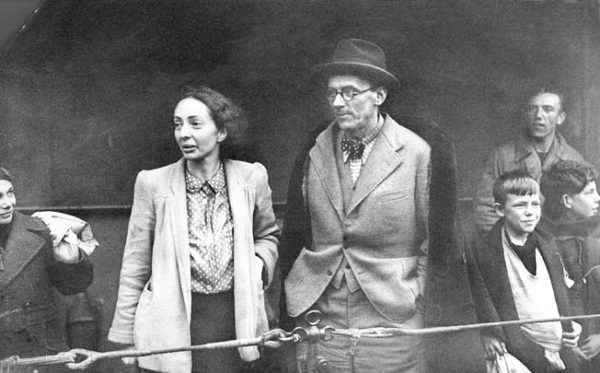
U-48 and Heinrich Bleichrodt
Heinrich Bleichrodt (1909−1977) was given command of the U-48 on 4 September 1940. It was a time when Hitler ordered his navy to set up a blockade of Great Britain in hopes of starving its citizens. Four days later, U-48 set out on Bleichrodt’s first mission. During the four-week patrol, Bleichrodt’s submarine sank eight ships including the Benares. While the sinking was highly controversial, Bleichrodt never wavered from his argument that he and the crew did not know children were on board the ship. (The ship was not marked as an evacuation vessel.) He was arrested for war crimes pertaining to the sinking of the Benares. Bleichrodt was acquitted after the Allies agreed with his defense. The U-boat commander never apologized to the survivors or relatives of the dead.
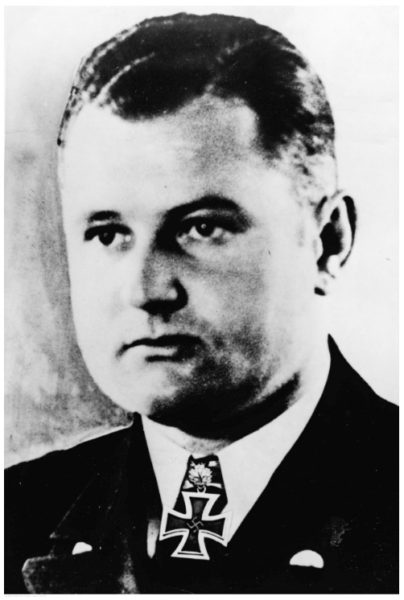
Aftermath
After the sinking of the Benares, public opinion turned against evacuating the children. Churchill immediately canceled the CORB, and no further government sanctioned evacuations took place. (Private evacuations continued well into 1941.)
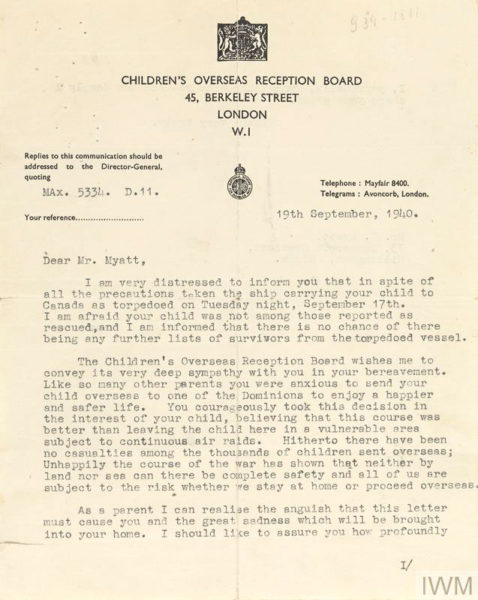
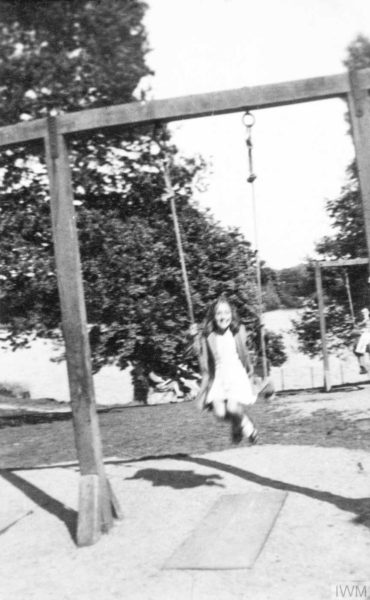
National Archives
The U.K. National Archive publishes a blog (see below) and one of those blogs told the story of this tragedy. There really wasn’t much difference from most of the other reference sources I read. However, there were twenty-three comments attached to the blog and they grabbed my attention. While I won’t repeat all of them, I’d like to share a selected few with you. The link to the blog is referenced below so that, if interested, you can read all the comments.
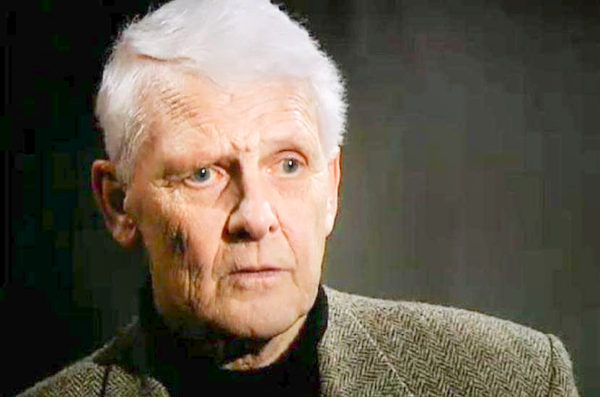
“My mother told us that she and her sister were due to sail on this boat, but her mother stopped them from going at the last minute.”
⏤Christine Walker
August 2017
“My father was on board with his wife. She died of exposure in the lifeboat. He was forever angered at the Royal Navy, who he held fully responsible for the tragedy.”
⏤Sheila Deane
May 2019
“My two brothers and I were due to be evacuated on the City of Benares. By luck, my brother Geoffrey took ill a day or so beforehand so my mother decided that all of us would not go. How very fortunate for us. We have all gone on to celebrate our Golden Wedding anniversaries.”
⏤Alexander Black
September 2019
“My Dad’s sister, Betty Unwin, aged twelve was on the City of Benares. She sadly was not one of the survivors. Her Dad was a shop keeper near the Liverpool docks and thought it would be safer for her to be away from the war. I am told my Nan never got over the loss of Betty. Full of guilt for not fighting enough to keep her home. I think I’ve read from survivor’s stories that Betty got into a lifeboat but must have died of exposure in the lifeboat.”
⏤Julie Unwin
February 2020
“My father was on an escort destroyer, HMS Active. They were inbound to Liverpool with another convoy. I remember him telling me they passed the City of Benares on her outbound journey. He told me that he remembered seeing the children on her deck and they all waved at the passing ships. Some hours later, they heard the news the City had been torpedoed. They immediately turned around but took some time to get to the scene. It was dark and he remembered seeing the lifeboats with dead children in them and many bodies of children and adults in the water. This experience upset my father badly and he always said it was his worst experience.”
⏤Anthony King
March 2020
For more information on British sea convoys, please visit my previous blog, The Wrens (click here to read). Learn how the German U-boats were able to successfully penetrate the British convoys and sink the interior ships. That is, until British women figured out how to stop them.
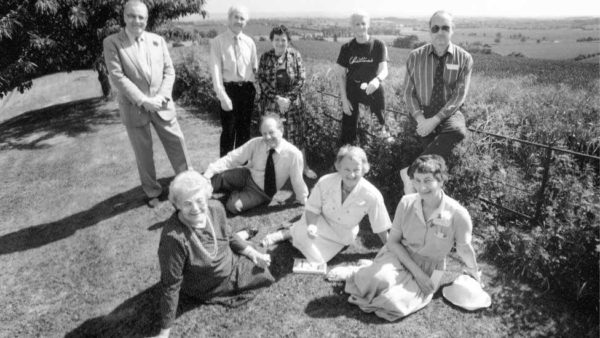
★ ★ ★ Learn More About The SS City of Benares ★ ★ ★
Barker, Ralph. Children of the Benares: A War Crime and its Victims. London: Lume Books, 2020. Original edition published by Methuen London Ltd., 1987.
Heiligman, Deborah. Torpedoed: The True Story of the World War II Sinking of “The Children’s Ship.” New York: Henry Holt and Company, 2019.
Menzies, Janet. Children of the Doomed Voyage. New York: John Wiley and Sons, 2005. U.K. National Archives Click here to visit the web-site
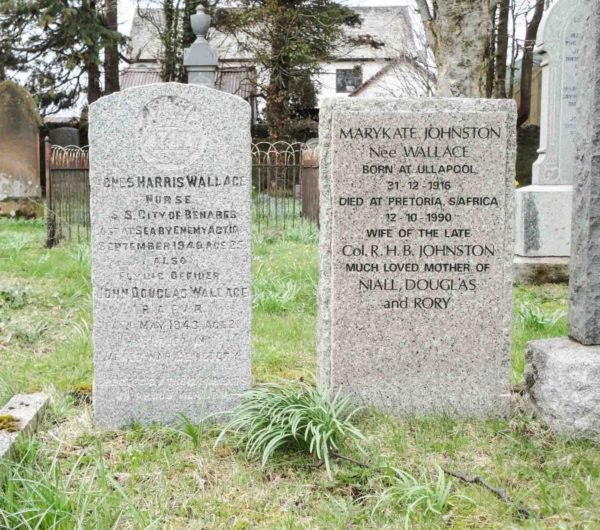
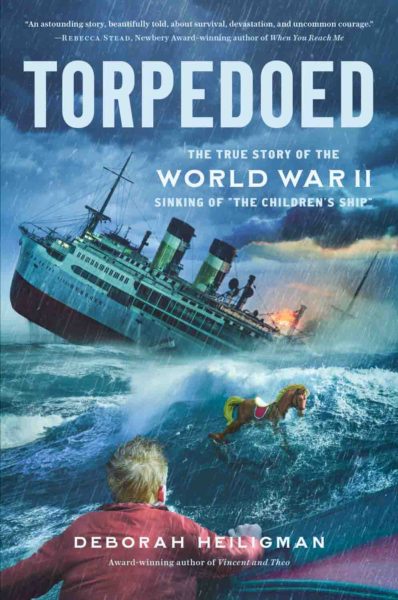
Disclaimer:
There may be a chance that after we publish this particular blog, the video links associated with the blog are no longer accessible. We have no control over this. Many times, whoever posts the video has done so without the consent of the video’s owner. In some cases, it is likely that the content is deemed unsuitable by YouTube. We apologize if you have tried to access the link and you don’t get the expected results.
What’s New With Sandy and Stew?
Sandy and I just got back from Las Vegas where we met up with our California son and his family for a short visit. On our way back, we got caught up in Southwest Airline’s computer snafu at Denver airport. The delay allowed us time to personally meet with a new subscriber, Mark and his friend, Charlie (they both work at the Denver airport). Mark recently contacted us regarding our blog, Kindertransport and Mr. Winton (click here to read). He wanted to know why Trevor Chadwick had not been honored by Yad Vashem as Righteous Among the Nations. Mark believed that Trevor was a more likely candidate than Sir Nicolas Winton (who was nominated but due to his family’s Jewish heritage, was not honored). I only briefly mentioned Trevor in the blog but after Mark contacted us, I did some research on Trevor. I believe Mark is right. It seems Trevor might have been nominated by one of the children he saved. (Trevor died in 1979.) Yad Vashem’s Righteous data base does not list Trevor. There is no doubt he met the four criteria established by Yad Vashem to qualify for the award. So, I mentioned to Mark that perhaps someone did not follow through on completing the process and we all agreed that was the likely explanation.
Mark and Charlie (he will help Mark with translating Hebrew) indicated they will take up the task of applying Trevor for the honor of being named Righteous Among the Nations. I wish both all the best as this will be a huge undertaking, but it is worthwhile. I will be following their exploits and on a periodic basis, I will report back to all of you on their progress.
Thank you to all of you who subscribe to our bi-weekly blogs. It seems there isn’t a day that goes by where we don’t increase our readership. Please let your history buff friends and family members know about our blog site and blogs.
Someone Is Commenting On Our Blogs
I’d like to thank Bonnie G. for contacting us regarding our blog, Agent Jack, M and the Fifth Column (click here to read). One of the British citizens we focused on was Marita Perigoe, a member of the British Union of Fascists (BUF) and a British traitor. It turns out Marita was Bonnie’s grandmother’s cousin. Marita moved to Australia and married John Gordon McKenzie. She kept her Fascist opinions and war-time actions from her husband. Mr. McKenzie mysteriously died at his desk. Thank you, Bonnie, for your personal story.
Since I’ve mentioned the BUF, the head of the organization was Oswald Mosley (click here to read the blog, British Fascists and a Mitford). Sir Oswald and Diana Mitford had a son, Max Mosely (1940−2021), who went on to become a professional race car driver and head of the international Formula One organization. Max died recently on 23 May 2021. Just thought you’d like to know.
Also, thanks to Pat V. and Nicole C. for their kind comments concerning our annual 5 May blog about the liberation of the Netherlands.
I would also like to thank Derek L. for alerting me to the story of the Indian children working onboard who perished along with the British children. I told Derek that I never ran across these facts while researching this story. Derek ran across this information while researching the RIN in the Battle of the Atlantic. He mentions that not even Indian naval historians appear to know about it. Derek says, “Sort of like the Lost Boys in Peter Pan.”
If there is a topic you’d like to see a blog written about, please don’t hesitate to contact me. I love hearing from you so keep those comments coming.
Why Would You Want to Buy Our Walking Through History Books?
Simple.
You like to travel and experience history and historical events. You like to see original buildings that had a significant impact on the people and events of the history you’re engaged with. You want to know the stories behind the brick and mortar in front of you.
The walking tour books are meticulously researched so you can go directly to those sites and learn about the building’s history as well as an introduction to some of the more interesting people associated with it.
We Need Your Help
Please tell your friends about our blog site and encourage them to visit and subscribe. Sandy and I are trying to increase our audience and we need your help through your friends and social media followers.
Thank You
Sandy and I appreciate you visiting with us. We have some exciting things on the horizon, and we’ll keep you updated as we go along.
Share This:
Follow Stew:
Find Stew’s books on Amazon and iBooks.
Please note that we do not and will not take compensation from individuals or companies mentioned or promoted in the blogs.
 Walks Through History
Walks Through History
Copyright © 2021 Stew Ross

This story about the children of the SS City of Benares had me holding my breath as I read about their plight. Thanks for sharing this moment in history.
Hi Margaret; good to hear from you again. Thank you for your comment about the blog. Glad you liked the story although to be honest, I wish in this case there had been no story to write about. Take care. STEW
I discovered the tragic story of Beryl Myatt and all the others sailing on the Benares and its sinking some twenty years ago whilst browsing the Staffordshire Evening Sentinel for 1940… Stoke-on-Trent and Newcastle-u-Lyme suffered some seventy five deaths during the bombings of the UK during 1940/41 and I included Beryl Myatt amongst them (I was researching the War years in both areas). ;l/ all were victims of war… I have published over the said twenty years the facts pertaining to Beryl Myatt on a local Facebook Page but the interest displayed was next to non-existent which disappointed me but I suppose that the passing of time dulls aged the memory and those of a different generation have no interest unless its about modern migrants seeking safety in the UK – but I suppose that’s life – or death; depending on your point of view…
Hi Reg, thanks for contacting us. You are very correct with your comments. I believe this is why history repeats itself. The Soviet Union has been gone now for a mere thirty years and an increasing number of people are enamored with Communism. It is a failed economic system but either people forget, haven’t been taught, or they haven’t talked to someone who suffered under Communism. While most of us are aware of the Holocaust (although surprisingly, a majority of young people aren’t), the breadth and depth of Nazi atrocities are not studied in school. Kids probably know more about the Romans from two thousand years ago than they do about the twelve-year Third Reich only ninety years ago. Hope you keep reading and enjoying the bi-weekly blogs. STEW
In war, there may be just action. Attack on an obviously civilian transport ship heading westerly across North Atlantic from European Theatre, remains a dishonourable disgrace.
Hi Roslyn; Yes, I agree with you totally. It’s a shame the U-boat captain was never held responsible for his actions. Thanks for contacting us as well as subscribing to our bi-weekly blogs. STEW
A fascinating story, but really sad that nobody ever remembers the twenty Indian children aka Boy Seamen – cabin boys, laundry boys and potwashers – aged fourteen and probably younger, who also died in the sinking
Hi Derek; yes, a very sad story and it is too bad that the stories written about this tragic event (including mine) never mention the other children who were working on board. I will update my blog to include a comment about them. Thanks for bringing that to our attention. STEW
Thanks for this article! Very well written and accurate. I have been researching this tragedy for about two years now, for a non-fiction adult book I am writing about the sinking (it will be called “The Cold Grey Sea”). I noticed, though, that the deaths of children among private passengers were not included. 77 of 90 CORB children died, as well as 4 of 10 fare-paying passenger children, so in total 81 British children died in the SS “City of Benares” disaster, out of 100 on board. 177 adults also died, out of the 306 on board. In total, 258 people died, 148 survived.
Thank you Mr. Meyers for reaching out to us. I appreciate you bringing this to my attention. When I wrote the blog I only focused on the children of the CORB program. Clearly, based on the facts you’ve presented along with Derek’s comments, I should have included the full story of all the children who lost their lives in this sad event. I hope you enjoy our blogs; past, present, and future. STEW